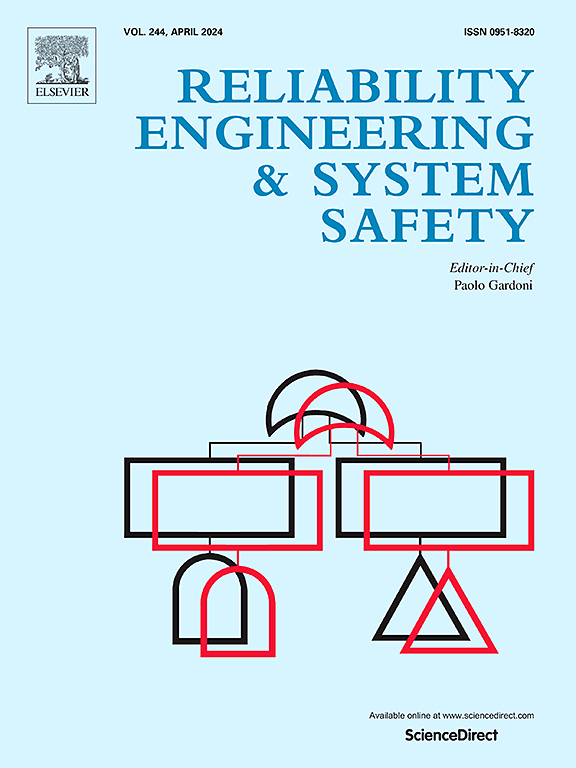基于扩展耦合地图格的全球班轮运输网络脆弱性评价
IF 11
1区 工程技术
Q1 ENGINEERING, INDUSTRIAL
引用次数: 0
摘要
班轮运输已成为全球贸易的重要组成部分,了解班轮运输的脆弱性对确保其稳定运输至关重要。本文提出了扩展的耦合映射格(CML)模型来分析班轮运输网络中的漏洞和级联故障。该模型从网络拓扑和传输动力学的角度考虑了节点间的动态交互,提出了一种节点故障后负载转移的新分配机制。本文通过仿真研究了节点容量、外部干扰、耦合强度等因素对网络脆弱性的影响。结果表明,增加节点容量可以减轻级联故障,但可能导致局部流损失增加。研究强调,扰动的传播受网络结构和传输关系的影响,拓扑特征最高的节点不一定会导致最严重的级联故障。此外,模拟表明,即使受到轻微干扰,某些节点也可能导致广泛的网络故障,这突出了理解海运班轮运输网络中中断动态传播的重要性。本文章由计算机程序翻译,如有差异,请以英文原文为准。
Vulnerability assessments of global liner shipping network based on extended coupled map lattices
Liner shipping has become a vital part of global trade, and understanding its vulnerability characteristics is essential to ensure its stable transport. In this paper, we present the extended Coupled Map Lattice (CML) model to analyze the vulnerability and cascading failures in liner shipping networks (LSN). The model considers the dynamic interactions between nodes from the perspectives of network topology and transport dynamics, and proposes a new allocation mechanism for load transfer after node failures. The paper investigates through simulation studies the effects of various factors such as node capacity, external interference, and coupling strength on network vulnerability. The results indicate that increasing node capacity can mitigate cascading failures but may lead to increased local flow loss. The study emphasizes that the propagation of disturbances is influenced by network structure and transport relationships, and nodes with the highest topological characteristics may not necessarily result in the most severe cascading failures. Furthermore, simulations suggest that certain nodes, even when subjected to minor disturbances, can cause widespread network failures, highlighting the importance of understanding the dynamic propagation of interruptions in maritime liner shipping networks.
求助全文
通过发布文献求助,成功后即可免费获取论文全文。
去求助
来源期刊

Reliability Engineering & System Safety
管理科学-工程:工业
CiteScore
15.20
自引率
39.50%
发文量
621
审稿时长
67 days
期刊介绍:
Elsevier publishes Reliability Engineering & System Safety in association with the European Safety and Reliability Association and the Safety Engineering and Risk Analysis Division. The international journal is devoted to developing and applying methods to enhance the safety and reliability of complex technological systems, like nuclear power plants, chemical plants, hazardous waste facilities, space systems, offshore and maritime systems, transportation systems, constructed infrastructure, and manufacturing plants. The journal normally publishes only articles that involve the analysis of substantive problems related to the reliability of complex systems or present techniques and/or theoretical results that have a discernable relationship to the solution of such problems. An important aim is to balance academic material and practical applications.
 求助内容:
求助内容: 应助结果提醒方式:
应助结果提醒方式:


